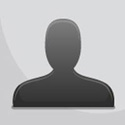
|
|
||
|
As a follow-up to our 2nd article in the "Leading Problem Solving in Non-Manufacturing Series" that described the acronym "TIM WOODS" as it applies to non-manufacturing environments, this 3rd article in the series will explain how you can teach your eyes to see these waste form in non-manufacturing areas and then how to engage your team in problem solving.
An important skill for leaders is to learn to “see”. This means seeing beyond what most people see, or at least a different perspective of the same image. Teaching your eyes to see is a learned skill, that once mastered, opens your eyes to many new things.
So how do you learn to see? Practice.
The first step is to Go to the area in which work is performed and go with a specific purpose to learn to see. For example, go with a focus to see one specific type of waste from the TIM WOODS definitions as summarized below. For more examples of each type of waste in non-manufacturing areas, you may want to review the previous article here. So what do you do if the work is done on a computer? Go to computer and observe what is done, how it is done, the steps involved, information required, etc. You can learn a great deal from observing any type of work. Observing someone doing data entry or programming, can be enlightening to see, what they experience. It could be glare from overhead lighting or sunshine, large numerical entries prone to errors, system delays while background analysis takes place, excessive clicks to complete a desired task, etc.
The next point is to dedicate an appropriate amount of time to see a very specific focus. I'd recommend no less than 30 minutes, and more appropriately 60 minutes depending on the area you are reviewing and the people being engaged. However, it's less about the size of the office area, and more about giving enough time to really see and observe the various forms of waste. Sometimes, depending on the type of waste, you need to observe for a longer period of time before the waste actually takes place. For example, to see wasteful "transportation" or employees walking around looking for information they need to do their job, likely only occurs periodically. Unless you are just lucky enough to be there at the right time, you will miss this type of waste unless you observe long enough.
Look for that specific focus that you determined and only that focus. Resist the temptation to "wander" or make a "laundry" list of everything you see. When you see the specific focus items, ask yourself as many questions as you can about that particular item. See beyond the obvious. Look for deeper meaning, symptoms, evidence, or abnormalities. Ask "why" many times to understand what is really happening.
Although efficiencies and personal productivity can be improved by engaging in TIM WOODS in non-manufacturing areas, I'd suggest it's less about that, and more about reducing employee frustrations and distractions. Employees will become more engaged, energized, and happier! Of course, if your employees are engaged, energized and happier, they will be more able to focus on their work tasks resulting in improved efficiencies and personal productivity.
This type of activity is something you can practice on your own, together with your team, or engage your team to increase engagement, awareness, and sustainment long term.
Often leaders in non-manufacturing areas struggle with what to put on their Leader Standard Work (LSW). This is a great one to add - "Conduct TIM WOODS audit"! Whether it be weekly, monthly or otherwise, adding to your LSW and integrating it with your calendar by reserving time in your calendar makes for very effective leadership.
Team engagement can be done by establishing an audit type system (similar to a layered process audit) where the TIM WOODS focus areas and office locations are pre-determined and an audit frequency and responsibility schedule/matrix is made up. In doing so, each team member will be have the responsibility to conduct a TIM WOODS audit on a specific focus area, in a specific location, at a scheduled interval.
When repeated often and with a new or different focus you will soon see these forms of waste naturally and without effort. Once you learn to see, you won’t be able to turn it off.
The next step is to engage your team in problem solving to resolve the cause of these wastes by implementing a "Problem Solving Auction" which includes the following key points:
To get you started, you can download our TIM WOODS audit sheet from our Tools page.
In the next article in this series we will discuss "Looking for evidence through gemba" in non-manufacturing areas.
If you missed the previous articles in the series, 'Leading Problem Solving in Non-Manufacturing Series", you can find them here:
|
||
|
||
|
||
|
||
|

|
|
HPL Administrator 7 November 29, 2024 |

|
|
Sabrina Sommerville 1 August 15, 2024 |

|
|
Glenn Sommerville 45 June 6, 2024 |